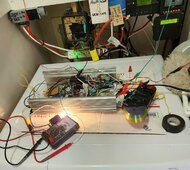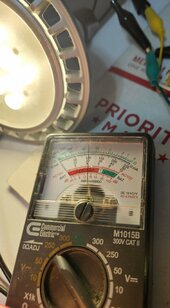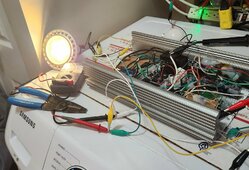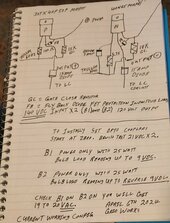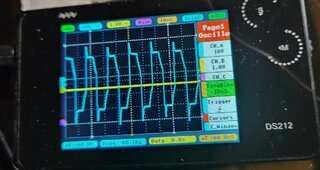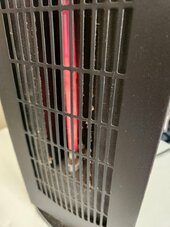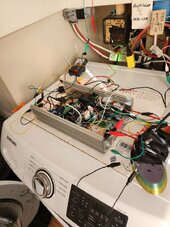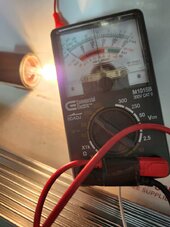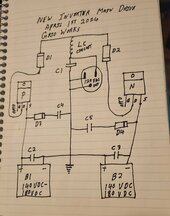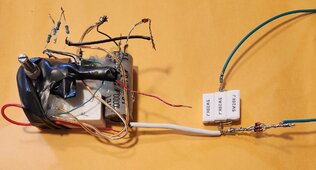GridWorks Green Solar
Solar Innovator
Wow both B1 & B2 at 140VDC 7 panels each with the FET gates running on a low setting 60Hz timing, Output from the inverter is at 220VAC. I have a stable situation running light bulb on a serious overcast day. For those looking for 220Volt 50Hz or 60Hz power here is your exit ramp.
My plan is to reduce the input voltage on both B1 & B2 till 120VAC output is achieved, after that hopefully full sun and full testing ahead.
Will back fill with solar panels for more amps once the input voltage mystery is solved.
Have a nice setup for continuing to test the two FET inverter during day time hours just a matter of time till I dial in the right settings, it was a small setback when the 40N65 MOSFET shorted but it was also a big tell about what is going on inside that inverter once I adjust the drive correctly the energy that caused the shorted FET will come out of the inverters output as 120VAC goodness.
Just a short time till I get it.
Has been running for hours now in the 220Volt mode, minimal loads, target 120VAC before I start load testing, hope you understand.
Current calculations suggest 4 panels each B1 & B2 for 85 volts 800 watts that still may be a notch high but the inverter will have the advantage 170 volt DC total input.
Something unexpected looking at 80 VDC or less main input voltage X 2 going forward instead of 180VDC, things like that make me happy
The original circuit diagrams for the solar panels layout has to be wrong way too many panels, I will supply correct information later.
Best wishes
My plan is to reduce the input voltage on both B1 & B2 till 120VAC output is achieved, after that hopefully full sun and full testing ahead.
Will back fill with solar panels for more amps once the input voltage mystery is solved.
Have a nice setup for continuing to test the two FET inverter during day time hours just a matter of time till I dial in the right settings, it was a small setback when the 40N65 MOSFET shorted but it was also a big tell about what is going on inside that inverter once I adjust the drive correctly the energy that caused the shorted FET will come out of the inverters output as 120VAC goodness.
Just a short time till I get it.
Has been running for hours now in the 220Volt mode, minimal loads, target 120VAC before I start load testing, hope you understand.
Current calculations suggest 4 panels each B1 & B2 for 85 volts 800 watts that still may be a notch high but the inverter will have the advantage 170 volt DC total input.
Something unexpected looking at 80 VDC or less main input voltage X 2 going forward instead of 180VDC, things like that make me happy
The original circuit diagrams for the solar panels layout has to be wrong way too many panels, I will supply correct information later.
Best wishes
Attachments
Last edited:



